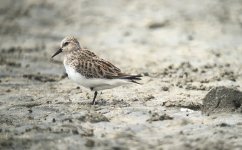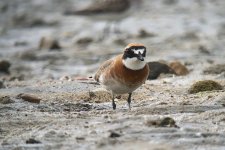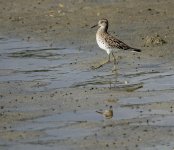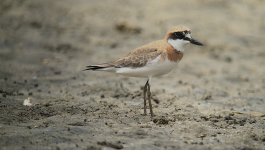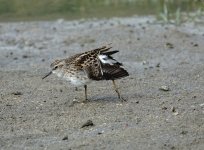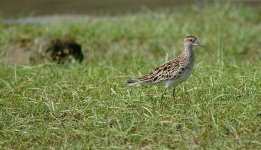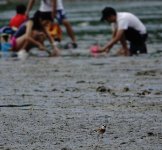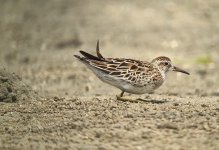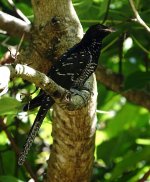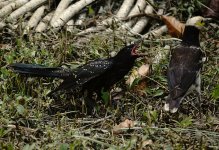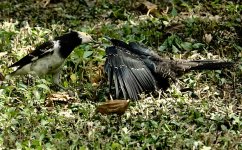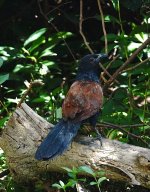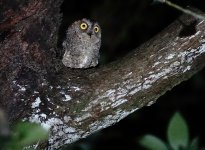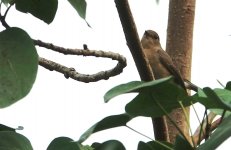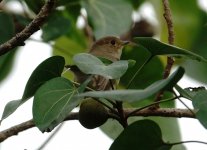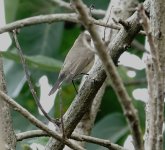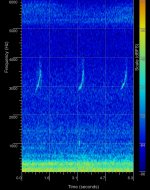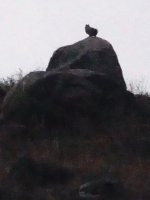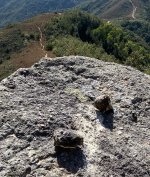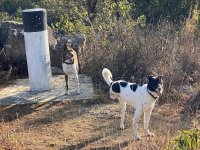A busy period of birding on Lantau started with a complete bust on the last day of 2020 with a night bird survey that delivered a big fat zero species on a chilly and occasionally windy night.
However things improved with my 21st January survey when, in addition to four
Collared Scops Owls, I was delighted to record and eventually figure out that I had connected with a calling
Brown Fish Owl close to the end of my route at Shek Mun Kap. It took a little detective work to match the call with one from a bird filmed on Cheung Chau a decade ago and helpfully posted to YouTube, but the sonogram below provided the final confirmation. The rest of the story is on Facebook :
here
Buoyed by this success I offered to do another route along the catchment on south Lantau between the Tung Chung Highway and Tong Fuk prison with Carrie and the dogs which delivered an amazing 11
Collared Scops Owls on
26th January - the joint record for CSO for a Night Bird Survey!
In between that another walk with the dogs on
23rd January - this time at Mui Wo - was rewarded with a fabulous male
Black-naped Oriole and a couple of
Hair-crested Drongos in a flowering cotton tree. The marshy buffalo fields on the other side of the stream produced a surprise
Northern Lapwing (a Lantau patch tick) and ten
Chinese Blackbirds in what has been a poor winter for thrushes. Inspired by this a return a couple of days later - in the vain hope that a winter Black-naped Oriole might in fact have been something more exciting - added a lovely male
Verditer and a heard but unseen
Taiga Flycatcher, an unexpected
Eastern Crowned Warbler plus another somewhat dubious Lantau tick in the shape of a
White-headed Munia.
Another outing to a barely visited Water Services Department road at the back of Shek Pik reservoir on
27th January produced my first
White's Thrush of the winter, a
Grey-backed Thrush several other unseen thrushes,a
Pale-legged Leaf Warbler and my first
Mugimaki Flycatcher - a nice male - for a couple of years.
More recently the discovery of a
Eurasian Eagle Owl on the hills above Discovery Bay had me marching uphill on
12 February, and happily connecting with a distant but undoubtedly identifiable bird that sat nicely silhouetted on a ridge top boulder and also gave its deep haunting call a few times. The same evening
Savanna Nightjars called from close-by, a
Russet Bush Warbler 'tzeep'-ed a few times and a calling
Barking Deer, a cliff-full of
pitcher plants, and the ultra endemic
Romer's Tree Frog calling from the stream below as I headed back downhill added further interest on a fine evening's birding.
And finally, this morning
15th January... although the story starts yesterday morning...when John Alcock sent a Whatsapp message that he'd found a Pale-footed Bush Warbler on the path that leads from right behind my block onto the ridge that runs (rather bumpily) the length of Lantau. Until this winter PFBW was a very difficult species to connect with. To realise that this bird was half a kilometre way from where I received the message on the sofa broke all records in terms of proximity to a twitchable bird. And I still couldn't go for it! We were heading out for the day and the dogs needed to be walked and fed, presents required wrapping etc.etc. I even got see two other Discovery Bay-based birders, Morten and Ben, up on the slope, ticking the bird while I walked the dogs! Thankfully I have seen PFBW a couple of time previously. I found one at Ng Tung Chai more than 15 years ago, and I watched another being pulled out of a net another decade before that! But wait, there's more! Heading further up the hill and walking the ridge westward John also found a Brown Bush Warbler which, if not quite as rare, is also very difficult to connect with. Again its a bird I've seen previously, but in the equally dim and distant past. So while I enjoyed my day on the boat it was always with the thought of two patch ticks sitting there literally within shouting distance of my home!
Back to this morning...
With a sunny unencumbered day breaking I decided to take the dogs up the hill to look for the Bush Warblers. The hillside was far birdier than I expected, with
Yellow-browed Warbler, Daurian Redstart and
Siberian Rubythroats calling, a couple of
Black-faced Buntings flipping about and
Yellow-bellied Prinias, Magpie Robins,Blue Whistling Thrushes and
Cinereous Tits all in good voice, plus the usual
Chinese and Crested Bulbuls, there were plenty of sounds that a twitchily over-sensitised ear could string into a Bush Warbler. A
Russet Bush Warbler did indeed start singing, but its song is so distinctively bradypterus-like that there was no mistaking it for the more fluty and explosive notes of Pale-footed. The path is pretty steep so I hardly run up it at the best of times, but stopping to listen to every call soon exhausted the dogs' patience and they zoomed on up without me.
I needn't have worried. When I got to the spot the
Pale-footed Bush Warbler burst into joyful song as if it was the most important bird on the hillside and absolutely demanded to be noticed. And there is absolutely no mistaking it for anything else. PFBWs are c
ettias - and their song is as loud and distinctive as any of this family. Here's a short excerpt of it singing at full blast right next to the path. It did not however deign to show itself before I had to head off in search of the dogs.
.
I decided I didn't want to chase after John's Brown Bush Warbler on Tiger's Head partly because it's steeper, partly because there are lots of people on that trail, and partly out of a preference for finding my own birds. So instead of turning left on the spine of the ridge I turned right and headed east instead. This path has delivered very little except an owl pellet on any of my visits but today I struck gold as a
Brown Bush Warbler barked out a couple of grumpy alarm calls and then started its distinctive thin humming 'ditditditditditditdit' song right at the trig point where I intended to turn round - result! I was absolutely delighted to record that too on my iPhone (below - the vertical bars between 2,000 and 4,500), but the quality of the recording is very poor that the only way to really share it is as a sonogram because Soundcloud seems not to have the range to capture low volume low frequency sounds - at least not that I can hear on my dodgy 8-year-old MacBook Pro. True to form, as a b
radypterus, it showed not even the barest flicker of a grass stem never mind any of its actual body.
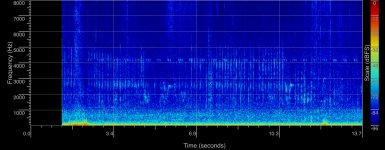
On the way back down I did get the briefest of views of the PFBW, which was still cheerfully attention-seeking like the youngest child in a very large family, but since the dogs had disappeared downhill and I needed to get after them I will have to come back to give this little cracker another go.
Cheers
Mike






